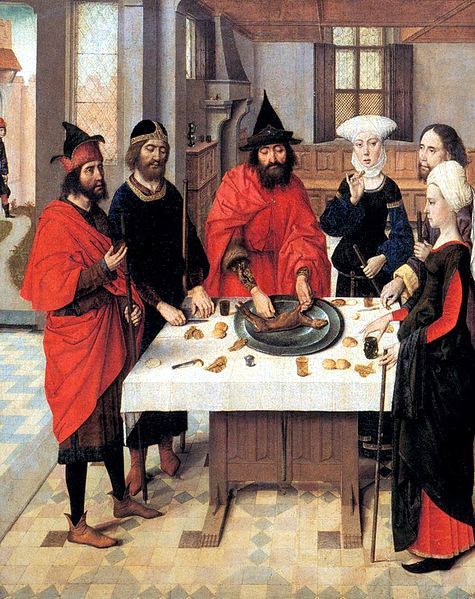Art: (click to view)
- “Preparation for the Seder” from the Sister Haggadah
- “Signs on the Door” by James Jacques Joseph Tissot
- “The Angel of Death and the First Passover” from the Foster Bible
- “Feast of the Passover” by Dieric Bouts
- “Seder (The Passover Meal) (Der Oster-Abend)” by Moritz Daniel Oppenheim
- “Passover” from Church of St. Peter and St. Paul in Andelsbuch, Austria
